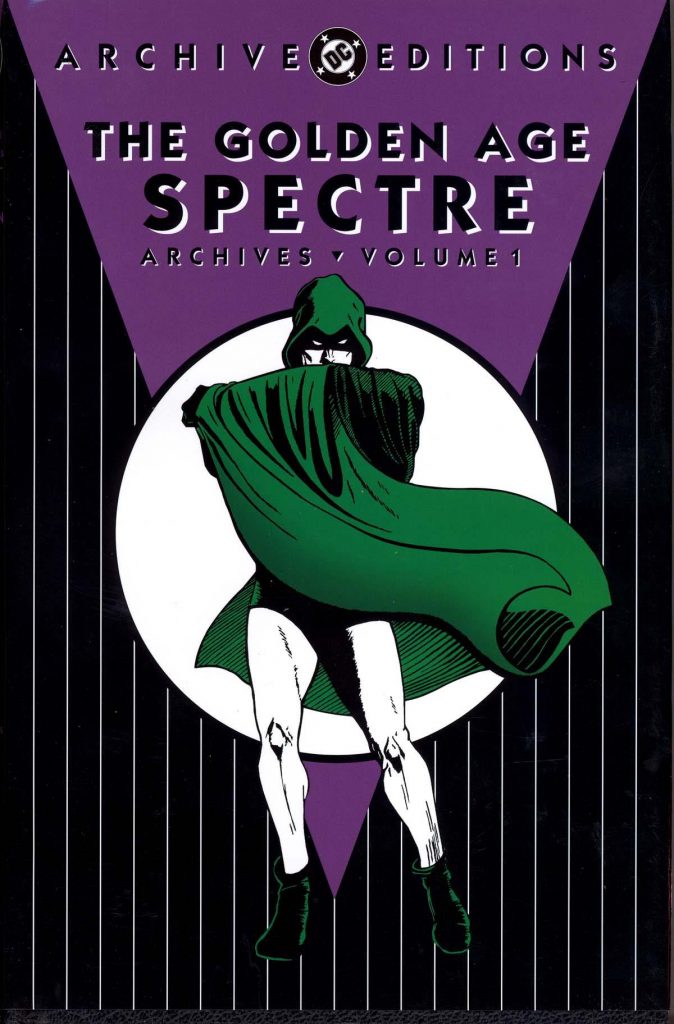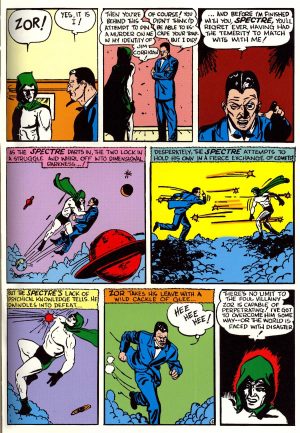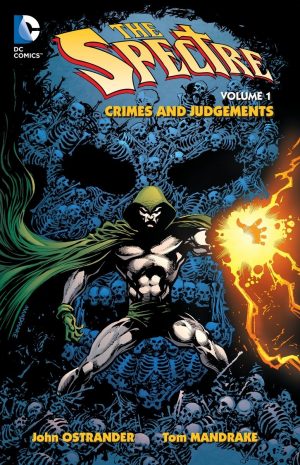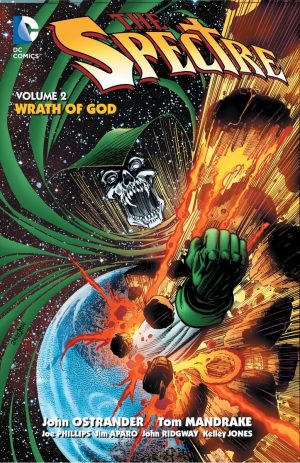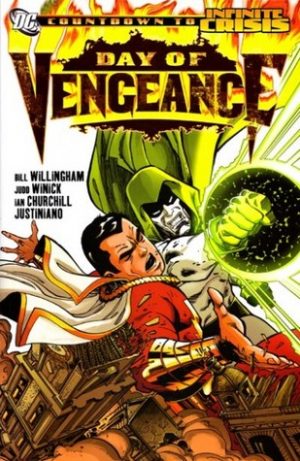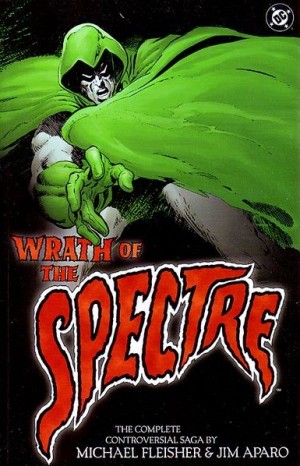Review by Frank Plowright
Jerry Bails’ informative introduction to these stories from 1940 and 1941 in some respects dampens expectation for what’s to come, pointing out logic and characterisation are largely absent in what it’s surprising to learn is DC third superhero. This is after Superman and Batman. He also highlights the casual attitude to continuity, so a strip of police officer Jim Corrigan swearing to hunt down the Spectre was published before the strip concluding with his assignment to do so. The absent common sense is largely down to creator Jerry Siegel’s brief to prioritise visuals, so while the Spectre might have near infinite abilities, the method involving the greatest spectacle is the one used.
Unusually for the era, the Spectre’s first story is his origin, showing hard-boiled police detective Jim Corrigan encased in a barrel of cement by gangsters and dropped off the pier. Corrigan heads up toward a bright light, only to be halted, told his mission on Earth is unfinished, and he must eradicate all evil with new supernatural powers. Even more unusually, the story continued over two comics. Corrigan takes his revenge, informs his girlfriend there’s no longer room for her in his life and sews himself a costume. The last bit’s ridiculous for someone now able to do anything just by thinking about it, but despite its age and genre conventions, the origin surprises as a tight piece of noir staging. Bernard Baily’s design for the Spectre is so phenomenal it’s barely been messed with since, and the Spectre able to kill with a look is mesmerisingly gruesome.
Despite their age, the oddness of these stories ensures some appeal, but consistency from strip to strip is absent. In one early example Corrigan reads a man’s mind to expose his guilt, yet in the next strip someone already under suspicion receives a free pass to continue their criminal activities. It’s secondary to Siegel’s imagination, however. He has the Spectre travelling through telephone wires years before the Atom, has him visiting a world in a picture decades before Doom Patrol, and early on the Spectre growing to giant size is a favourite. For the sample art the Spectre and his foe become larger than planets and toss comets at each other. He’s also crudely inventive in disposing of villains, a signifier to the Spectre’s 1970s incarnation, one villain melting, consumed by the evil within him. There’s no sense of irony about these monumentally grim morality tales originally being part of More Fun Comics.
Baily is a strange artist, perhaps a stronger designer. The covers to the original comics show a great eye for composing an individual image, and occasionally a panel will really impress, but most of the work is of its era, energetic, but crude.
Much the same can be said of Siegel’s stories. Read too many of these ten pagers in one sitting and the lack of logic irritates. The Spectre will go back an hour into the past to fool the police chief hunting him down, but doesn’t bother saving people who died earlier in the story. Too many tales feature some vague ghost back from the spirit world, or wealthy men being told they’ll die that night. Of course, the stories were never intended to be anything more than cursory entertainment in an anthology before being traded for some other kid’s comic. In the 21st century an individual story has some spark and charm, but it rapidly wears thin in bulk. This was considered volume one, yet there was no volume two presumably indicating the reception of this 1940s work in 2003.
